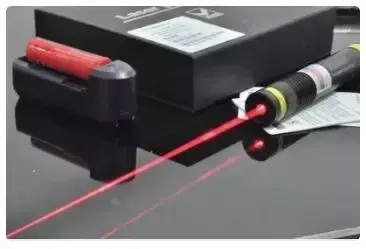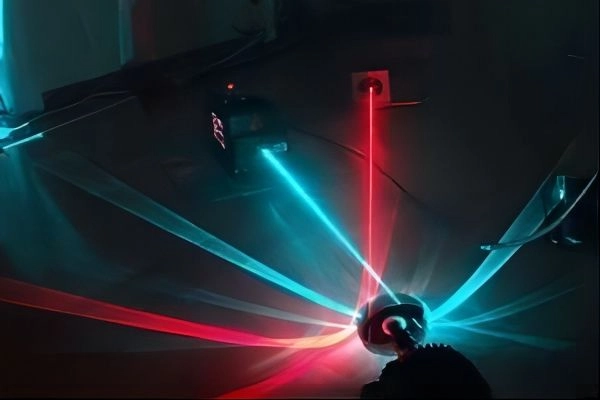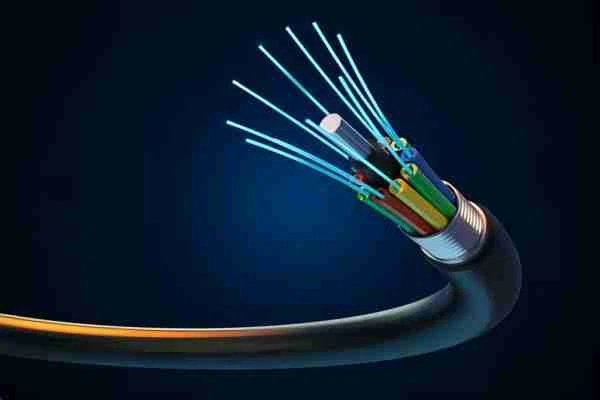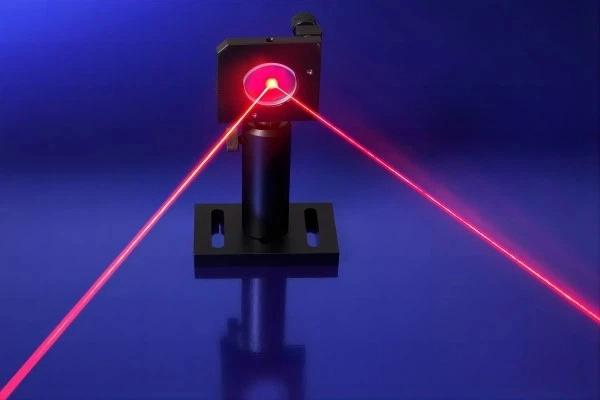In the dynamic world of photonics, the delivery mechanisms of high-power lasers play a pivotal role in determining their efficiency, applicability, and overall performance. Two of the most prominent methods in this domain are free-space output and fiber output. Both come with their unique set of advantages and challenges. In this article, we will delve deep into the intricacies of these output methods, comparing their pros and cons, and exploring their suitability across various applications.
Understanding the Basics
What is Free-space Output?
Free-space output is a method where laser beams are emitted directly into the open air or vacuum without the use of any guiding medium like optical fibers. This approach is commonly used in applications where direct line-of-sight between the laser source and the target is possible. The primary advantage of free-space output is the absence of any medium that might introduce losses or dispersion, ensuring that the laser beam retains its original characteristics.

However, the challenge lies in maintaining the beam’s alignment, direction, and focus over distances, especially in environments where external factors like air turbulence can affect the beam’s path. To address this, high-precision optics, such as lenses and mirrors, are employed to manipulate and direct the beam accurately to its intended target.
What is Fiber Output?
Fiber output, on the other hand, involves the use of optical fibers to guide and deliver the laser beam to its destination. Optical fibers are thin strands of glass or plastic that can transmit light over long distances with minimal loss. The core principle behind this is total internal reflection, where the laser light bounces off the walls of the fiber, remaining confined within it. This method offers several advantages. Firstly, it provides a high degree of flexibility, allowing the laser beam to be delivered to hard-to-reach places or even around corners. Secondly, optical fibers can protect the laser light from external interferences and contaminants, ensuring a purer and more stable output.

However, one must consider potential losses or distortions introduced by the fiber, especially over long distances. Nevertheless, with advancements in fiber technology, such as the development of single-mode fibers, these challenges are continually being addressed, making fiber output a preferred choice for many applications.
Advantages and Disadvantages
Pros of Free-space Output
Free-space output, as the name suggests, allows laser beams to travel freely in open space. This method has several advantages:
• Flexibility: One of the most significant benefits of free-space output is its inherent flexibility. Without the constraints of a physical medium, adjustments, modifications, and realignments can be made relatively easily. This is especially beneficial in research and experimental setups where parameters are frequently changed.
• Power Handling: Free-space systems are adept at managing extremely high-power lasers. Since there’s no physical medium like a fiber that the laser passes through, there’s a reduced risk of damaging any material due to the intense power of the laser.
• Broad Wavelength Range: Unlike fiber systems that might require specific types of fibers for different wavelengths, free-space systems can accommodate a vast spectrum of wavelengths. This versatility is particularly advantageous in applications that require tunable lasers or multiple wavelengths.
Cons of Free-space Output
However, free-space systems are not without their challenges:
• Alignment Sensitivity: The absence of a guiding medium means that the optics in a free-space system must be meticulously aligned. Even minor misalignments can result in significant performance degradation.
• Environmental Factors: Being exposed to open space, these systems are inherently more susceptible to external disturbances. Factors like air currents, temperature fluctuations, or even minor vibrations can affect the laser’s path and performance.
Pros of Fiber Output
Fiber output systems, on the other hand, offer a different set of advantages:
• Compactness: Fiber systems are inherently more compact. The integration of components and the ability to bend and route fibers make for a much more streamlined setup.
• Stability: The guiding nature of fibers means that once aligned, the system is less sensitive to external disturbances. The laser light remains confined within the fiber, ensuring consistent performance.
• Safety: With the laser light confined within the fiber, there’s a reduced risk of stray reflections or beams causing harm. This confinement enhances the overall safety of the system, especially in populated environments.
Cons of Fiber Output
Despite their advantages, fiber systems have their limitations:
• Power Limitations: While fibers are robust, they have their limits. Extremely high-power lasers can damage or even melt the fiber, especially if the power density exceeds the fiber’s threshold.
• Wavelength Restrictions: Not all fibers are created equal. Some are designed for specific wavelength ranges. If a laser’s wavelength falls outside of this range, a different type of fiber or even a free-space system might be required. This specificity can sometimes limit the versatility of fiber systems.
Applicability in Different Scenarios
Free-space in Scientific Research
In the world of scientific research, adaptability and precision are of utmost importance. Here, free-space laser output truly comes into its own. The absence of a guiding medium like a fiber allows researchers to easily adjust and realign the laser beam, providing a level of flexibility that is often required in experimental setups. Whether it’s studying the properties of new materials, conducting quantum physics experiments, or exploring the intricacies of light-matter interactions, free-space output offers a versatile tool.

Its capability to handle a diverse range of wavelengths means that researchers aren’t limited in their choice of laser light. Moreover, the high-power handling ability of free-space systems ensures that even the most power-intensive experiments can be conducted without the risk of damaging equipment.
Fiber Output in Medical Procedures
The medical field, with its emphasis on precision and safety, greatly benefits from the advantages of fiber output. When it comes to procedures like laser surgeries, the ability to guide the laser light precisely to the target area is crucial. Fiber output offers this precision, ensuring that only the intended tissues are affected, minimizing collateral damage.
In skin treatments, the controlled delivery of laser beams through fibers allows for uniform treatment, leading to consistent results. Additionally, the inherent safety of fiber systems, with their confined laser beams, ensures that medical practitioners and patients are not exposed to stray laser reflections, enhancing the overall safety of the procedure.
Industrial Applications: A Mix of Both
The industrial sector, with its diverse range of applications, often finds itself at the crossroads of choosing between free-space and fiber output. The decision is largely influenced by the specific demands of the task. For instance, when it comes to precision cutting of materials like metals or ceramics, the high-power handling capability of free-space systems might be preferred. This ensures clean cuts without the risk of damaging the laser system.
On the other hand, applications like welding or engraving, which require consistent and stable laser delivery, might lean towards fiber output. The stability offered by fibers ensures that the laser beam is delivered uniformly, leading to consistent results. In essence, the industrial domain showcases the versatility of both free-space and fiber outputs, leveraging their strengths based on the unique requirements of each application.
The Future of Laser Output Methods
Innovations in Fiber Technology
The world of fiber technology is undergoing a transformative phase. As research and development efforts intensify, we are seeing the birth of next-generation fibers that push the boundaries of what was previously thought possible. These new fibers are not only capable of handling significantly higher laser powers without degradation but also offer a broader range of wavelength compatibility.

This means that applications that once solely relied on free-space output due to power or wavelength constraints are now finding viable solutions within the realm of fiber technology. Such advancements are paving the way for more compact, efficient, and versatile laser systems, potentially revolutionizing industries from telecommunications to healthcare.
Adaptive Optics in Free-space Output
Free-space laser systems, while powerful, have always grappled with alignment challenges. Enter adaptive optics – a game-changer in this space. By dynamically adjusting optical components in real-time, adaptive optics compensates for external disturbances, be it air currents, vibrations, or temperature fluctuations.

This ensures that the laser beam remains stable and maintains its intended path. The result? A free-space system that is not only more resilient to environmental factors but also offers enhanced performance consistency. As adaptive optics technology continues to mature, it promises to make free-space laser systems more user-friendly and reliable, broadening their appeal across various sectors.
Conclusion
The choice between free-space and fiber output in high-power lasers is not black and white. It’s a nuanced decision influenced by the specific demands of the application, the available infrastructure, and future scalability. Both methods have carved their niche, and as technology advances, we can only expect them to become more refined, efficient, and adaptable. In the quest for laser perfection, both free-space and fiber outputs have pivotal roles to play.
FAQs
- How does free-space output handle external disturbances?
- Free-space systems can be sensitive to external factors like vibrations or air currents. However, with precise alignment and stabilization mechanisms, these challenges can be mitigated.
- Are there any safety concerns with fiber output?
- Fiber output is generally considered safer as the laser light remains confined within the fiber. However, care must be taken to ensure the fiber’s integrity, especially with high-power lasers.
- Which output method offers more flexibility in experimental setups?
- Free-space output is often preferred in research and experimental setups due to its flexibility and adaptability.
- Can one system integrate both free-space and fiber outputs?
- Yes, hybrid systems that leverage both free-space and fiber outputs are possible and can offer the best of both worlds.
- How do advancements in technology impact the choice of output method?
- As technology evolves, the distinctions between free-space and fiber output are becoming less pronounced. Innovations are bridging the gaps, allowing for more versatile and efficient laser systems.

Frank
Frank graduated from the University of Shanghai for Science and Technology, majoring in optics. As a technical engineer at Crylink Company, he deeply understands crystal materials and laser components.
Related Video(s) with this Article
Related Product(s) with this Article
Related Application(s) with this Article
